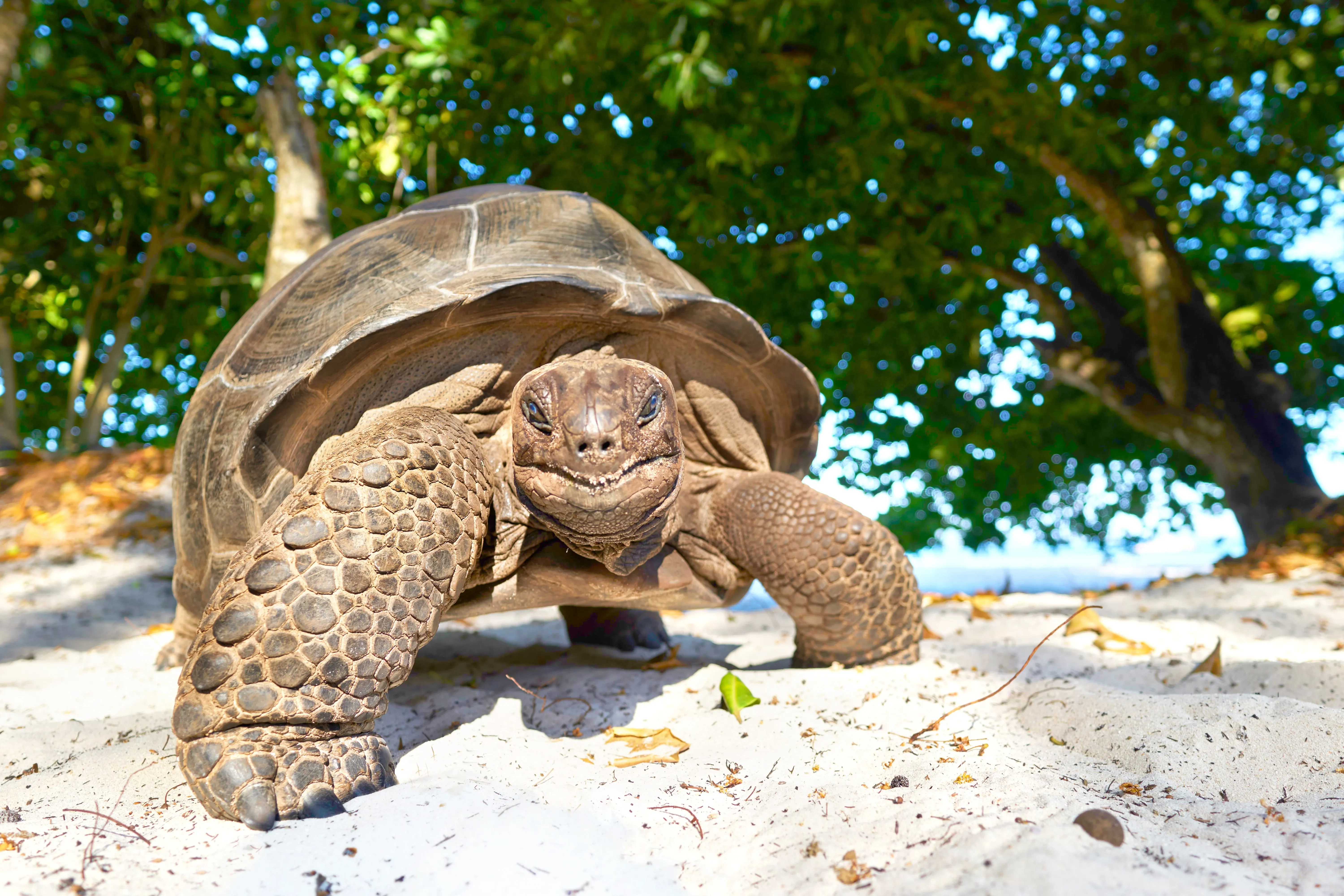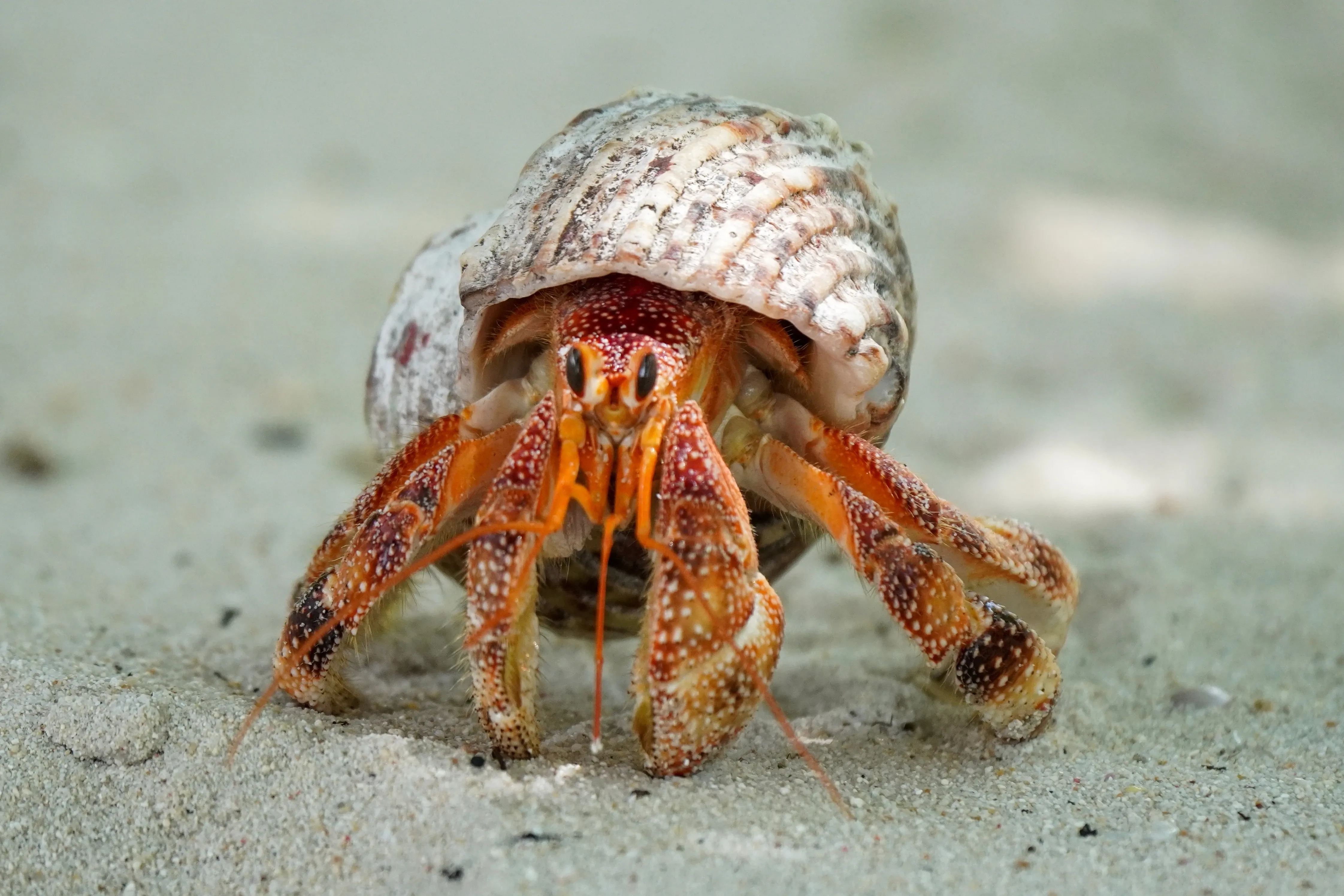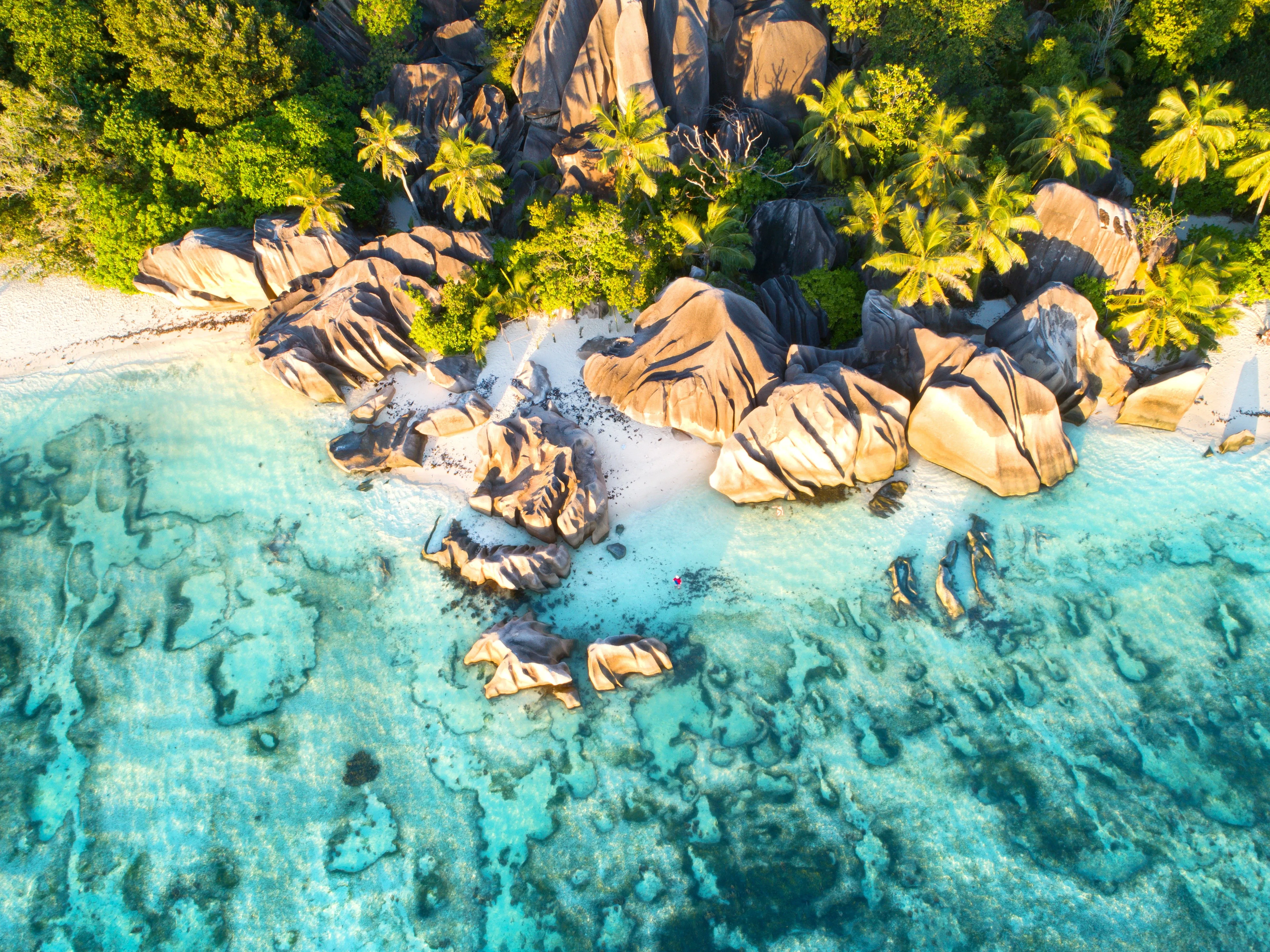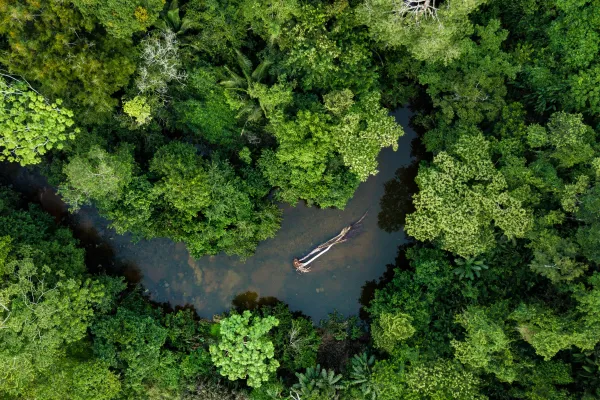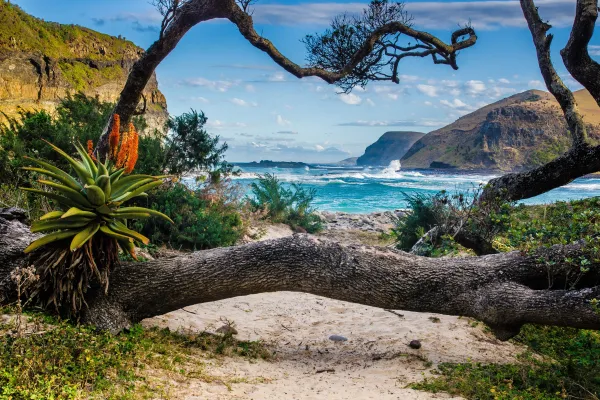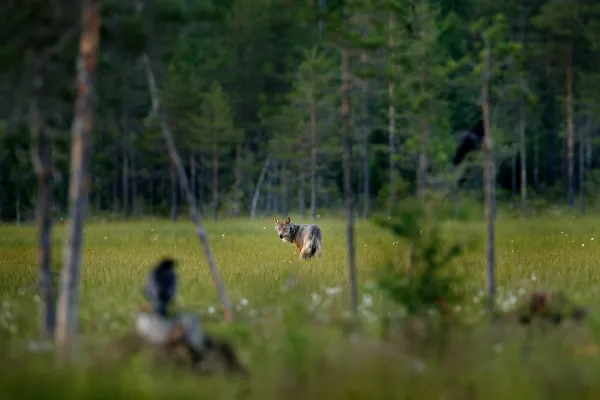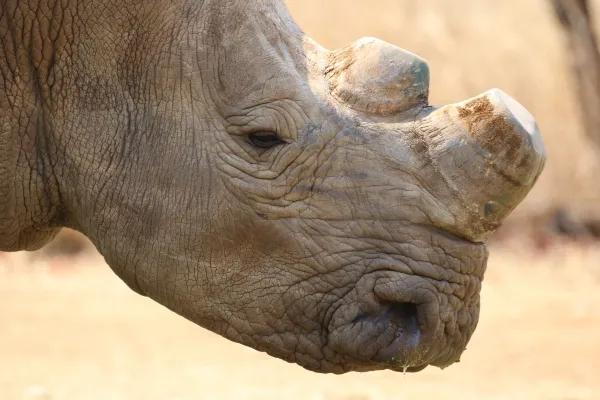The Seychelles - A tropical paradise
In the gleaming turquoise waters of the Indian ocean, an archipelago of lush green islands stud the vast blue surface. Home to a magnificent array of wildlife, ecosystems and natural wonders, the Seychelles one of Africa’s unsung gems.
White-sand beaches fringe the shoreline, where fish shimmer in the dappled sunlit reefs. Thick jungle carpets the inland areas, vibrant with birds and plant life. As well as stunning scenery and natural beauty, these islands host a rich and ancient culture, unique and flavorful cuisine, and are an incredible place to experience Africa’s wilderness.
The Seychelles - Africa’s ocean gem
About 1,000 miles from the coast of eastern Africa lies a unique paradise of 115 islands, forming the Seychelles archipelago. Situated in the remote Indian ocean, these islands are formed from granitic rock formations, created by continental drift and the breaking up of the ancient supercontinent, Gondwana.
Due to the remote location and historic isolation, the Seychelles are home to an unusual plethora of plant and animal species, many of which are endemic and found nowhere else on Earth. These include bird, bat, and tree species as well as the famous Aldabra giant tortoise, a popular attraction for many wildlife-oriented tourists. As an island nation, the Seychelles hosts a rich and abundant selection of marine wildlife, and has strong cultural and traditional ties to the ocean.

As climate change intensifies, life on these islands is changing for both the native people and wildlife - being a conscious visitor is more important than ever. However, there are many simple steps tourists can take to make sure they experience the best of the Seychelles without causing additional impacts.
Ecosystems of the Seychelles
The Seychelles boasts a unique ecosystem, teeming with rare flora and fauna. Its tropical forests are home to the endangered Coco de Mer palm and vibrant bird species like the Seychelles Black Parrot. Coral reefs encircle the islands, offering a haven for diverse marine life, including the hawksbill turtle and an array of colorful fish, making it a biodiversity hotspot.
1. Montane forests
The highland areas of the granitic islands such as Mahe and Silhouette are characterized by dense, steamy jungles which form montane forests. The misty conditions, warm temperatures and humid micro-climate create a unique niche which many rare plants are adapted to, such as the jellyfish tree and a variety of orchids and ferns.
These forests are an important habitat for wildlife, including bats, frogs, geckos and birds, and are also a large carbon sink, contributing to climate change mitigation by sucking carbon dioxide out of the atmosphere. Take a hike through the thick and damp forests and look out for Seychelles white eye birds and blue pigeons, both of which hide in the canopy.
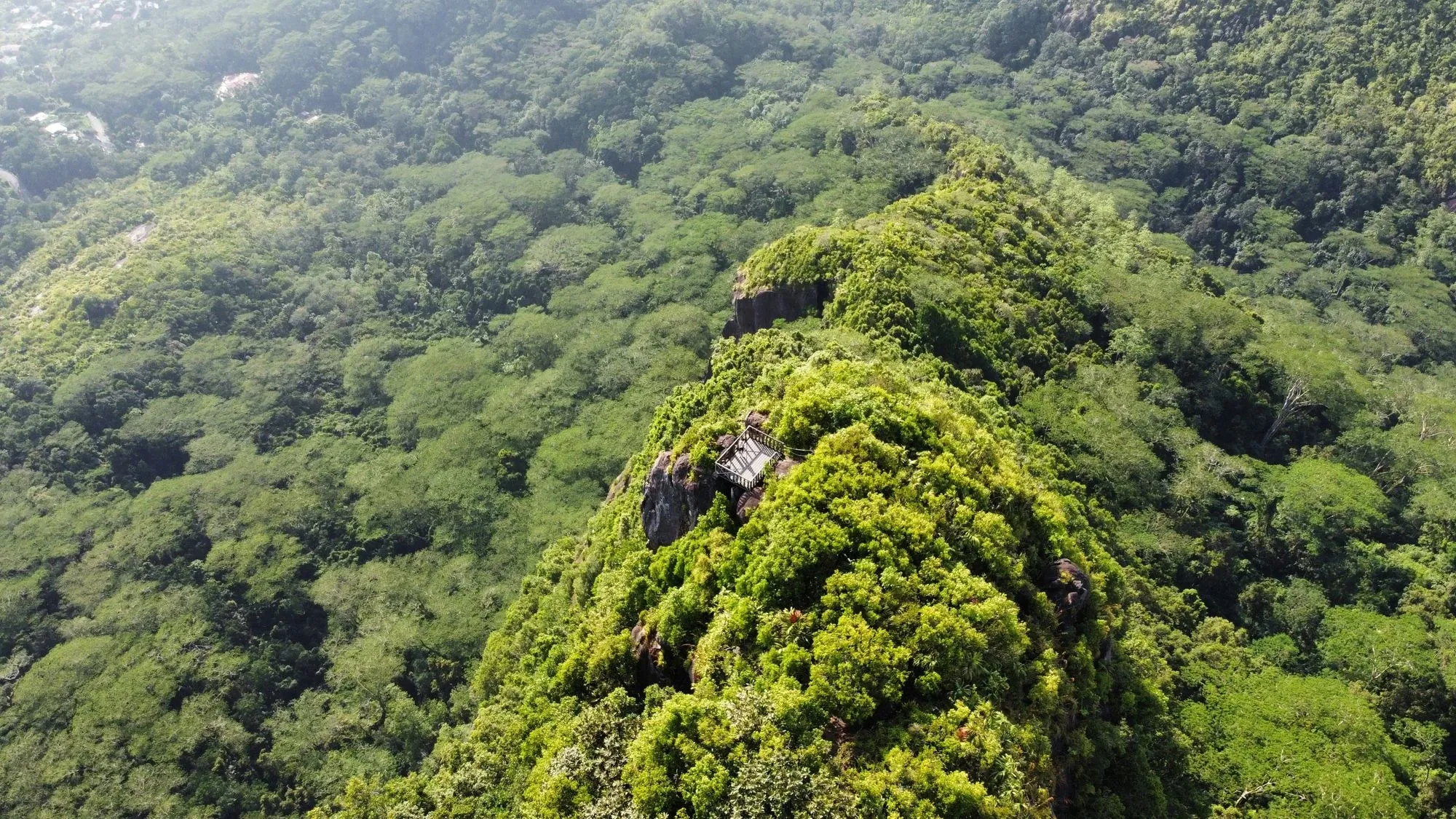
2. Mangrove forests
Down at sea-level, much of the Seychelles coastline is fringed with mangrove forest. Mangrove trees are specially adapted to thrive in the salty waters and instable sediments found along shorelines, with thick entangled roots and waxy leaves helping them survive these harsh conditions. Mangrove forests form a buffer zone along the coast, cushioning the land from intense wave energy caused by storms, and preventing the islands from being eroded away.
Their roots help bind the land together, and form a shady, cool, and sheltered habitat both above and below the water. Here, a multitude of birds, insects, reptiles and fish species can be found - the mangroves are always buzzing with life and the greenish smell of fresh leaves and ocean salt.
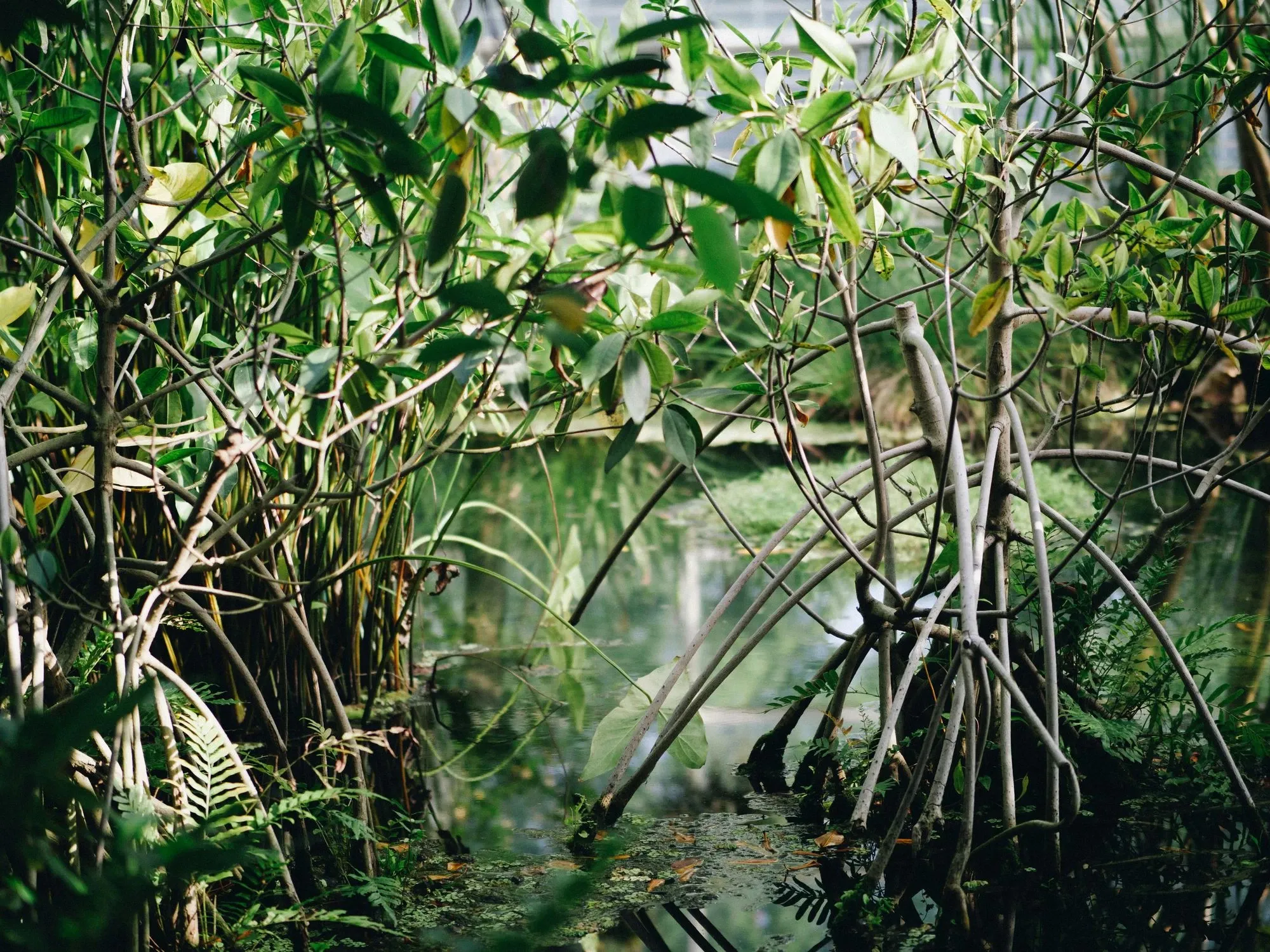
3. Coral reefs
The pristine shallow waters surrounding the Seychelles are a treasure-trove of coral reef ecosystems - from pastel colored soft corals to the chalky rainbow corals which form the basis of stony reefs, the coral ecosystems here are some of the best in the world. Growing from plains of fine white sand, the reefs are a metropolis of color and movement, harboring everything from fish and rays to turtles and sharks.
Patches of seagrass can often be found interspersed between reefs, especially in the shallow zones, whilst in deeper waters the more hardy corals grow and thrive. Coral reefs are crucial to the Seychelles in many ways; the reefs are a breeding and nursery ground for hundreds of fish species, many of which support the livelihoods of locals through fishing for both subsistence and selling at markets.
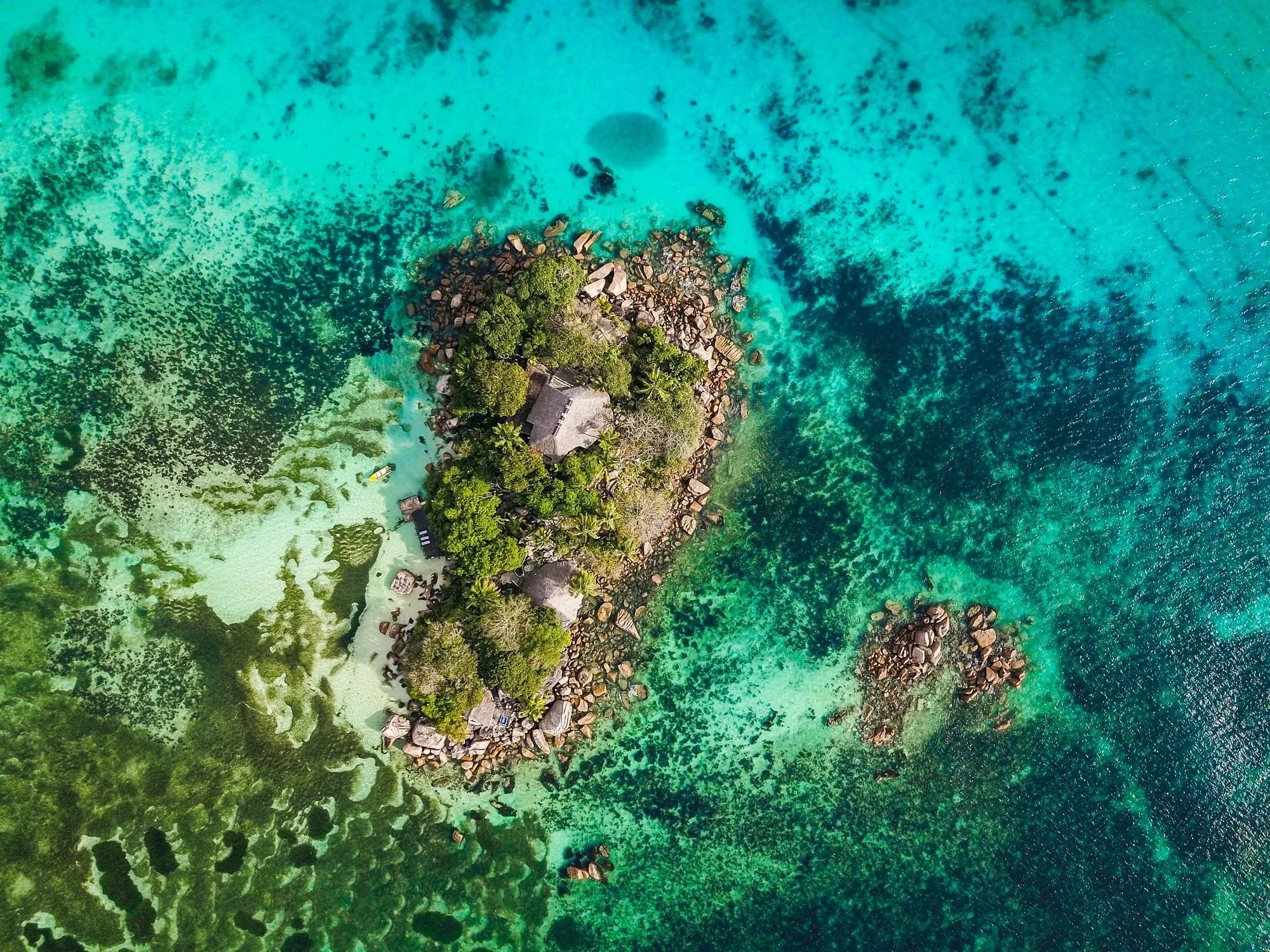
The reefs also provide a huge source of income through tourism, with tourists flocking to the islands to experience the magical colors and wildlife encounters these reefs have to offer. Like the mangrove forests, the reefs also provide a layer of coastal protection, slowing down the speed and reducing the intensity of waves eroding the islands, especially in stormy conditions.
Wildlife highlights in the Seychelles
One of the most iconic species of the Seychelles is the Aldabra giant tortoise, an enormous reptile species found on the Aldabra Atoll. These slow and steady shell-clad beasts can reach over 1m in length and weigh up to 100kg, but have a relaxed and peaceful lifestyle feeding on herbs and fruits and living for over a century, on average.
Whale sharks frequent the waters surrounding the Seychelles, following the krill and plankton which they feed on. The largest known fish on the planet, whale sharks can reach a staggering 12 meters in length, but are gentle giants an no threat to humans. They can be most reliably sighted at the northwestern region of the islands’ waters, during the monsoons season, and can be experienced from the water through snorkeling tours and trips.
Sea turtles, including green and hawksbill turtles, commonly nest on the beaches of the Seychelles and are a large magnet for wildlife enthusiasts. Females lay their eggs between November and January in pits dug into the sand, and hatchlings emerge a few months later in a rush of fresh scales and soft shells, eager to reach the cool of the waves. Experiencing the migration of infant turtles as they embark on their journey to the open ocean is a sight not to be missed.
Threats to the ecosystems of the Seychelles
Like all ecosystems across the planet, global warming and climate change are impacting the Seychelles and its biodiversity. Changes to rainfall patterns, particular increases in the intensity and frequency of heavy storms, is causing severe flooding and landslides across the islands, wiping out plant and animal life and changing the local habitat faster than species can adapt.
Climate change is also having a huge impact on the ocean, and as a small island nation, the Seychelles is feeling these effects heavily. Rising sea levels threaten to engulf these islands, as tides gradually creep higher and higher up the shoreline. Changes to ocean currents and conditions are altering the local biodiversity, such as plankton, krill, and fish populations, which are a major prey source for larger predators such as sharks and whales. Changes to these prey sources has a large influence on predators further up the food chain, altering their feeding habits and distribution.
The warming of the ocean is also having negative effects. Warmer sea surface temperatures threaten coral reefs, as these organisms cannot function normally in abnormal temperatures and can easily succumb to starvation and disease when under heat stress. In addition, the ocean is becoming more acidic, which can dissolve the skeletons of corals and shells of molluscs, threatening their existence. Human interferences also impact the health of the Seychelles’ natural ecosystems. Mangroves and seagrass beds are commonly removed to make way for coastal developments such as hotels and resorts, whilst human wastewater and litter cause pollution across the islands and their reefs.
How to conserve a healthy ecosystem of the Seychelles
Conservation of natural habitats and native species is a key component of preserving the Seychelles and ensuring its natural beauty remains intact for generations to come. Through a combination of legal protections, sustainable tourism developments and local projects, the Seychelles is taking action to protect its wildlife and protect its communities from the effects of climate change.
The Seychelles actively engages in international collaborations, research and projects to address both climate change and the biodiversity crisis. Protected areas have been established to enhance native species recovery, and coastal protection measures such as replanting mangrove forests and seagrass beds are being implemented throughout the islands. There is also increasing investment in green and renewable energy sources, and growing promotion of sustainable tourism over standard and conventional tourist packages. This includes improved waste management and reduction, eco-friendly accommodation, low impact experiences and initiatives to educate tourists about behavioral changes which can have a large benefit to local wildlife and communities.
When visiting the Seychelles, there are many small actions you can take to ensure you are being a responsible tourist. Sticking to organic, natural products such as sunscreens and shampoos reduces the stress put on marine ecosystems around the islands, especially if you are spending lots of time in the water snorkeling or diving. Using reusable products and saying no to single use plastic helps reduce waste on the island, and supporting local, sustainable and eco-approved businesses ensures your money is going to good causes. If you would like to get more involved, you can donate to local wildlife charities and conservation projects, or even volunteer with them to make a larger impact and contribute to a greener, vibrant and sustainable future for the paradise islands of the Seychelles.
Sign up for the newsletter
By clicking on “Subscribe now” I will subscribe to the Conscious Explorer newsletter with all the information about mindful travel. Information on the success measurement included in the consent, the use of the shipping service provider MailChimp, logging of the registration and your rights of revocation can be found in our privacy policy.

